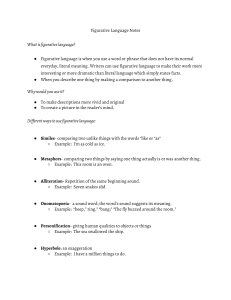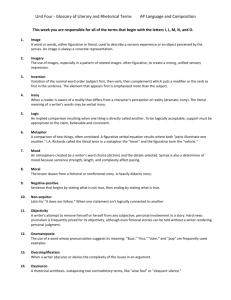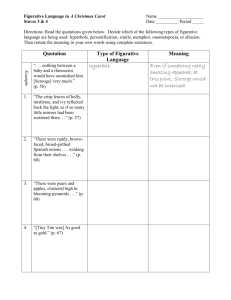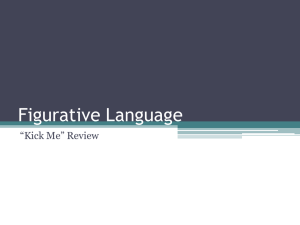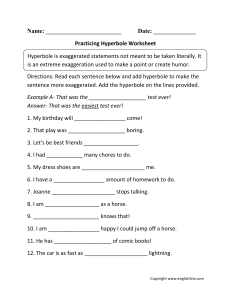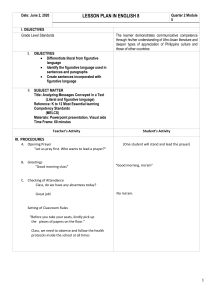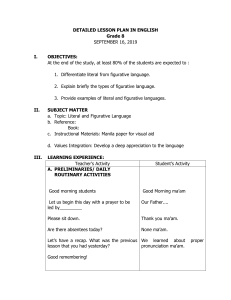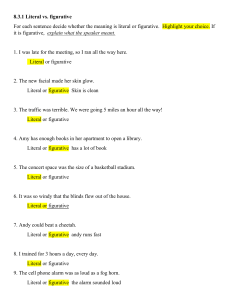Figurative Language
advertisement
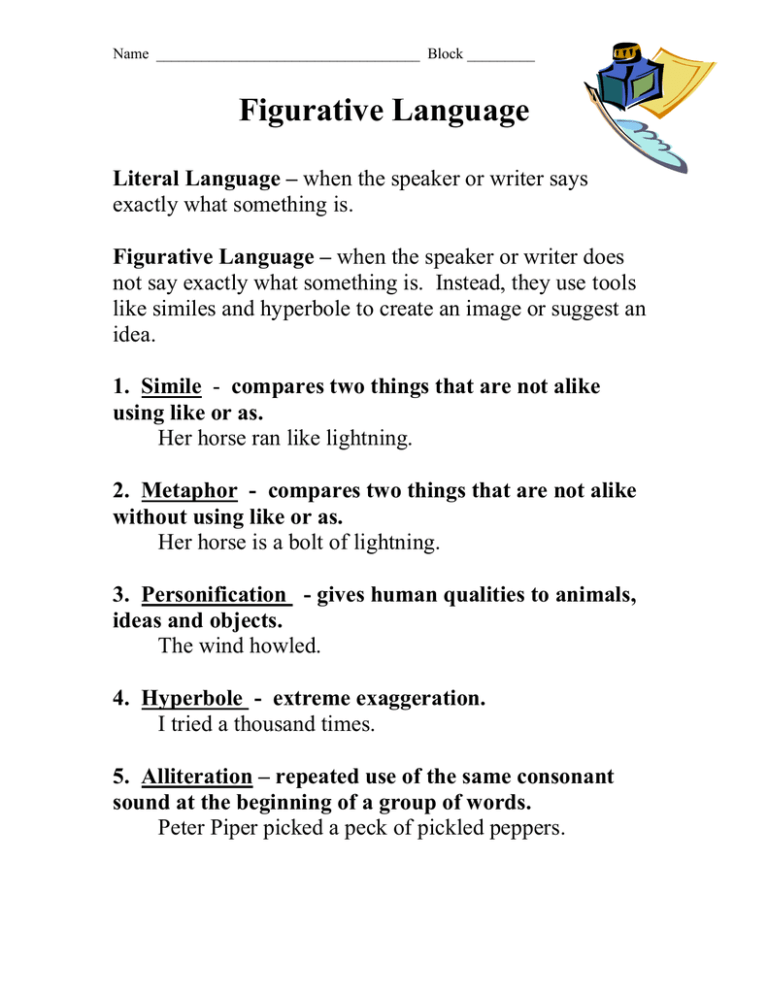
Name ___________________________________ Block _________ Figurative Language Literal Language – when the speaker or writer says exactly what something is. Figurative Language – when the speaker or writer does not say exactly what something is. Instead, they use tools like similes and hyperbole to create an image or suggest an idea. 1. Simile - compares two things that are not alike using like or as. Her horse ran like lightning. 2. Metaphor - compares two things that are not alike without using like or as. Her horse is a bolt of lightning. 3. Personification - gives human qualities to animals, ideas and objects. The wind howled. 4. Hyperbole - extreme exaggeration. I tried a thousand times. 5. Alliteration – repeated use of the same consonant sound at the beginning of a group of words. Peter Piper picked a peck of pickled peppers. Name ___________________________________ Block _________ 6. Onomatopoeia - a word which imitates a noise or action. The fly buzzed past. 7. Idiom - an expression that has a meaning that is different than the literal meaning. I’ve got a frog in my throat. 8. Cliché - A word or phrase that has become overly familiar or commonplace. No pain, no gain. She’s as cute as a button. 9. Pun - a play on words; the use of a word in such a way that the use suggests multiple meanings, or suggests the meaning of another word that sounds similar. Niagara Falls but never breaks. To write with a broken pencil is pointless. Knowing how to interpret figurative language helps readers better understand and enjoy what they read.
